The Common Types Of Hanfu in China
- Hanfu, knowledge
With the popularity of Chinese culture, in recent years, we can see lovely Hanfu boys and Hanfu girls all over the world.
Hanfu is the traditional costume of the Han nationality. Also known as Han clothing. It is from the Yellow Emperor ascended the throne to the middle of the 17th century AD (late Ming Dynasty and early Qing Dynasty) period of Chinese to wear hanfu.
The types of Hanfu styles according to the history of the dynasties are classified as Qin Dynasty Hanfu, Han Dynasty Hanfu, Wei Jin Hanfu, Sui Tang Hanfu, Song Dynasty Hanfu, Ming Dynasty Hanfu, Qing Dynasty Hanfu, Modern hanfu.
According to the design style, there are different styles: Qu train, straight train, high waist skirt, ruqun, Aoqun, Horse-face Skirt, oround neck robe, Baidie Skirt, Zhu Zi deep clothes. It is divided into men’s Hanfu and women’s Hanfu according to gender.
Today we introduce some common Chinese traditional clothing styles.
Quju/曲裾 (Curved-hem robe)
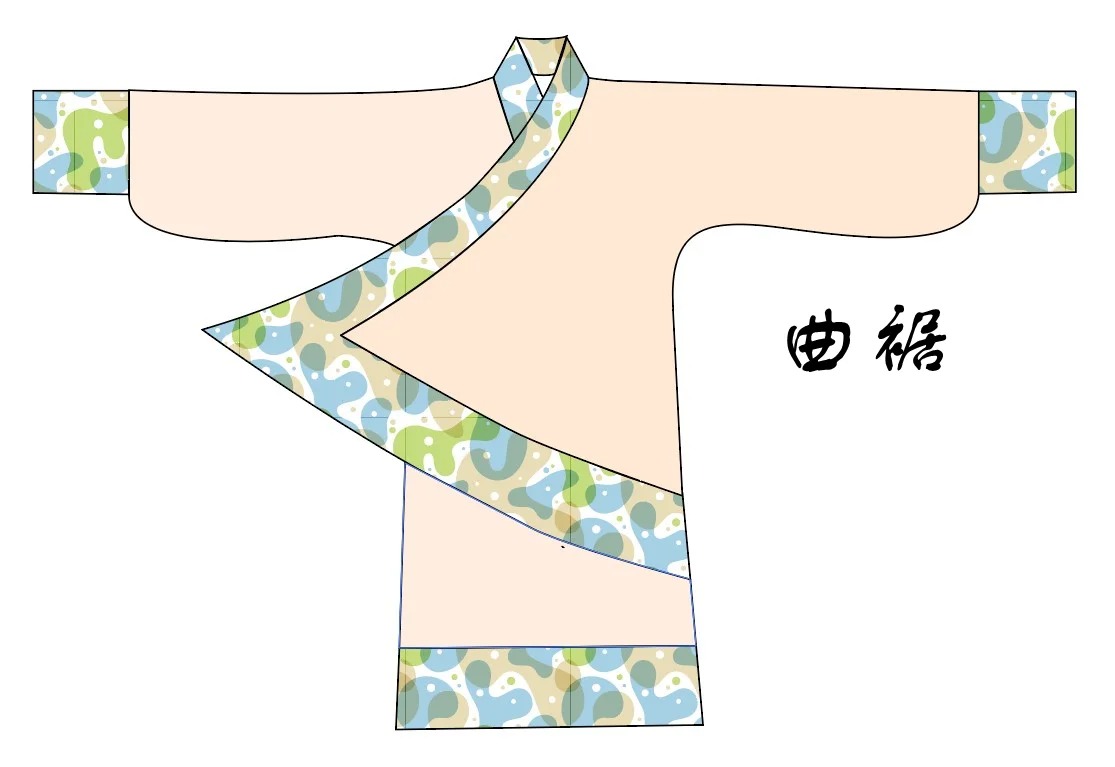
The “curved-hem robe” refers to an attire where the upper garment is connected to the lower skirt, with an elongated back piece of the top worn underneath the lower skirt, forming a wrapped lapel. It wraps around the back before coming forward and is secured at the waist with a large belt.
Design details of the curved-hem robe include the “extended lapel with hook edge,” where the garment’s lapel extends and forms a triangle at the back, wrapping around to the front when worn and then fastened with a waist belt. The upper body effect of the curved-hem garment can help enhance the figure, especially in modern interpretations of Hanfu, where the design accentuates more contemporary aesthetic body lines.
The design of the curved-hem robe was particularly common in female attire during the Qin and Han dynasties, worn by both men and women. Its development went through a peak during the Qin and Han periods, evolving through the Eastern Han to the Wei-Jin and Southern and Northern Dynasties periods, before declining after the Sui and Tang dynasties. In the modern revival movement of Hanfu, the curved-hem garment has once again garnered attention and appreciation.
Zhiju/直裾(Straight-hem robe)
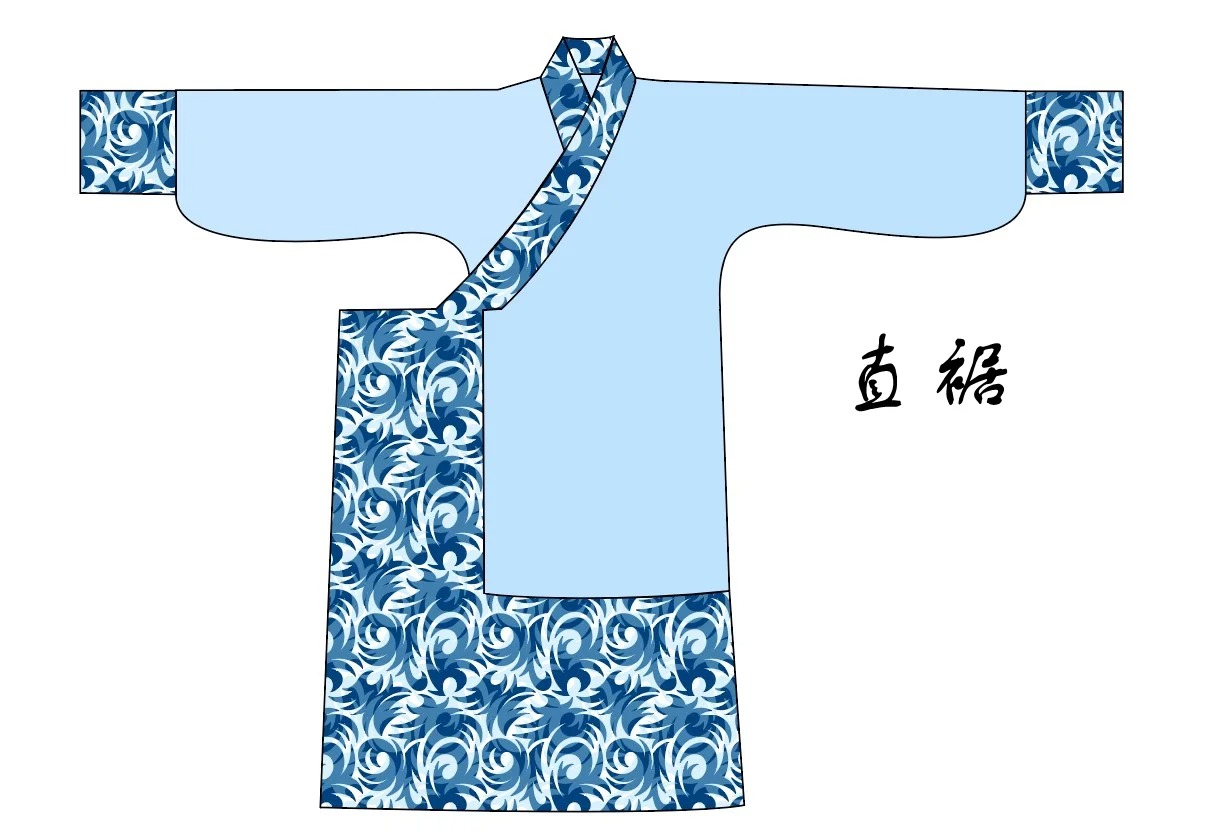
The characteristic of the straight-hem robe lies in its hem, which hangs vertically to the ground without the design of wrapping around to the back as seen in the curved-hem garment. This style of deep garment gradually gained popularity after the curved-hem garment, especially after the Wei-Jin period, becoming the mainstream attire.
The design of the straight-hem deep robe is relatively simple, with the lapel hanging vertically from the shoulders, forming a straight line. The lower part of the garment is cut straight, and the lower garment part typically drapes at the side or slightly to the back. This design makes it more convenient for the wearer to move while also reflecting a dignified and formal style.
Beizi/Baidie Skirt (褙子/百迭裙)
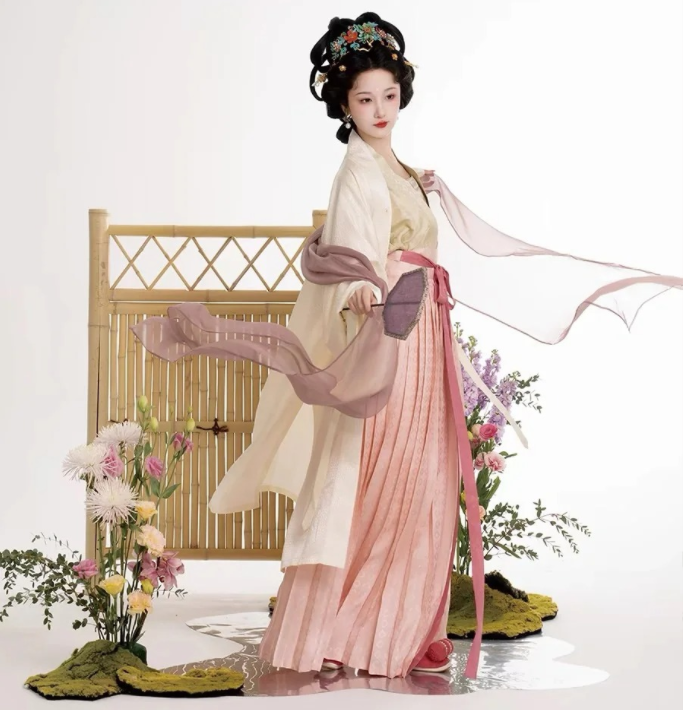
Baidie skirt, also known as “pleated skirt” in modern times, refers to a skirt consisting of many thin, vertical folds, showing a regular wavy texture.
The most distinctive feature of the dress is the pleats in the hemline. These folds are usually very fine, the interval between each fold is uniform, between about 2 cm – 4 cm, less hundreds of folds, more than thousands of folds, beautiful, but more complex production.
Making a hundred skirt requires fine craftsmanship, and each fold needs to be carefully calculated and made to ensure the overall beauty of the skirt and the uniformity of the folds.
Aoqun (袄裙)
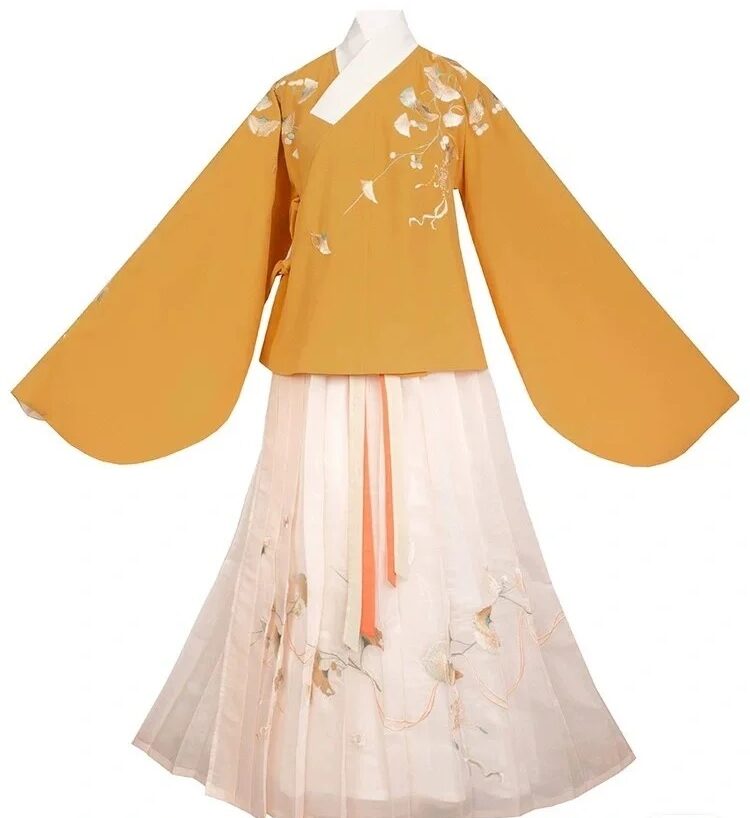
The “Aoqun” in Chinese Hanfu generally refers to the double-layer tops and bottoms with inner jackets in the Ming Dynasty.
The aoqun is composed of two parts: the skirt and the jacket. Jacket is a lined jacket, usually more loose, sometimes with sleeves, the cuff is tight to store warm as the main effect; Skirts, which wrap below the waist, wide sleeves often reach the ankles or longer.
The style of the dress is rich and varied, including different collar, sleeve, waist design, etc., can be selected according to personal preferences and occasion needs.
Horse-face Skirt(马面裙)
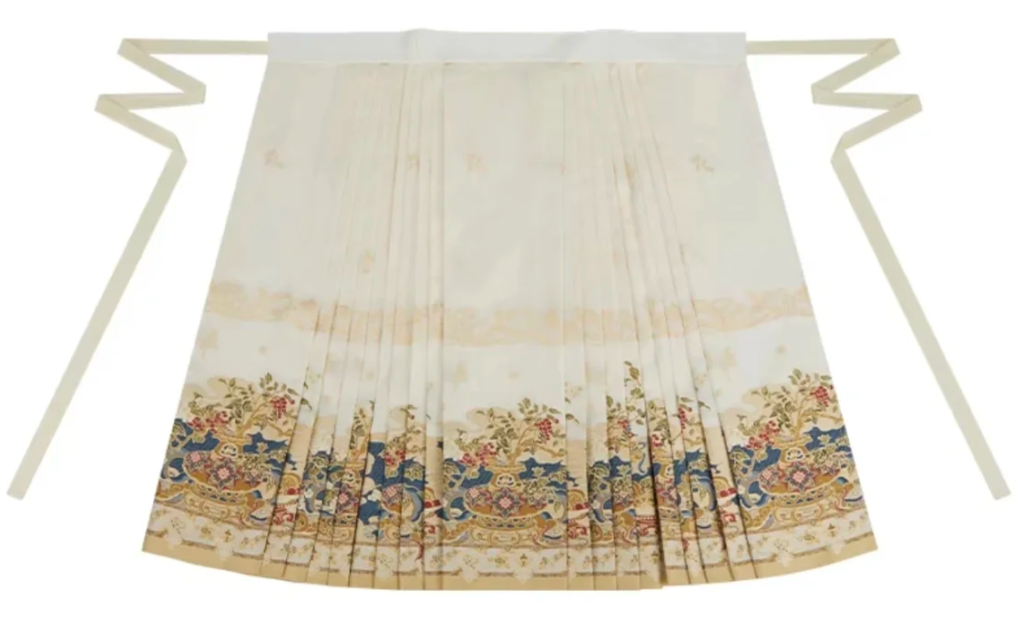
The horse-face skirt, also known as the horse-face pleated skirt, is a traditional Chinese dress known for its wide hemline and pleats, and is named for its horse-like face.
There are four skirt doors inside and outside, two and two overlap, the outer skirt door is decorated, the inner skirt door is decorated less or no decoration, the horse skirt is pleated on the left lapel side, the skirt waist is multi-purpose white cloth, and the meaning of a long life together is consolidated with a rope or button.
The hemline of the horse skirt is very wide and can swing with the movement of the wearer, showing beautiful lines and dynamic beauty. Skirts usually have a number of folds, these folds not only increase the three-dimensional sense of the skirt, but also can very well modify the body, so that the wearer looks slimmer.
The horse skirt is mostly made of high-quality fabrics such as silk and satin, supplemented by fine embroidery, edging and other processes, showing the luxurious and elegant temperament.
Flying Fish Suit (飞鱼服)
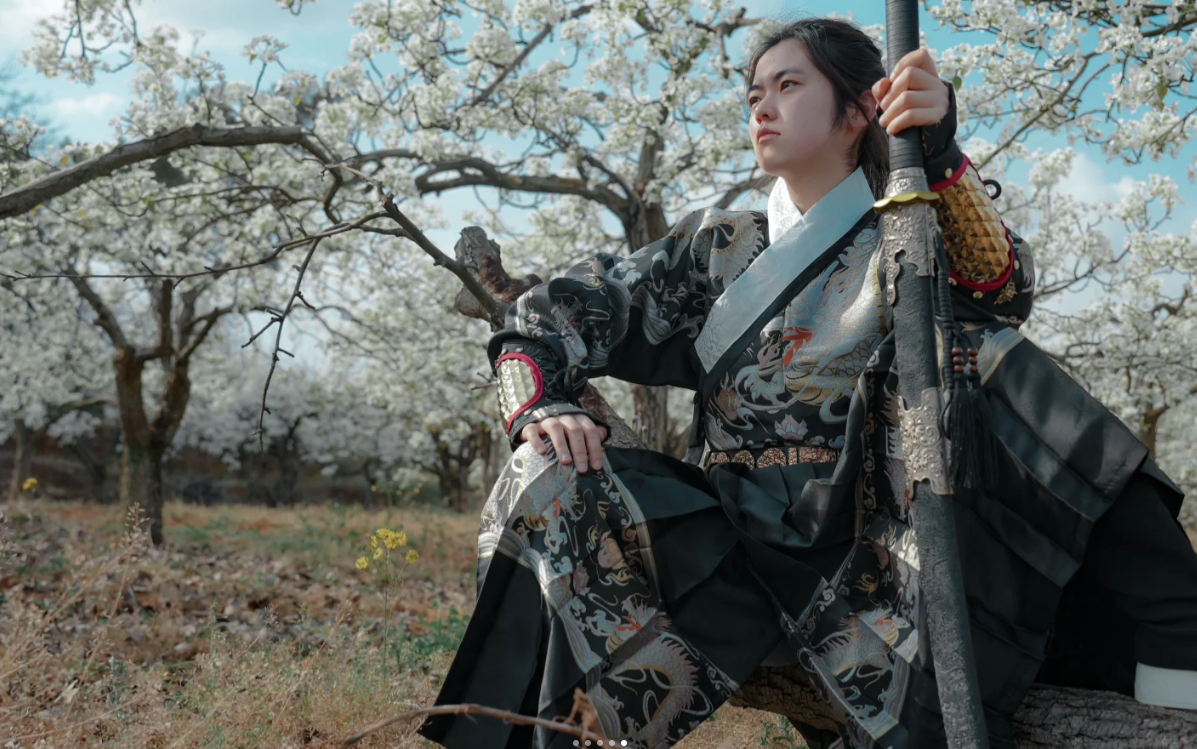
The flying fish suit is not a specific clothing shape, but a pattern, which can be decorated on a variety of different clothing. In the Ming Dynasty clothing system, the highest level of pattern is python, followed by flying fish suits, and again for bullfighting and Kirin, so there is a python suit, flying fish suit, bullfighting suit, Kirin suit.
The shape of the flying fish suit is eclectic, can appear in the demure round neck robe or straight robe of the patch, can also be embroidered in the dashing Shusha, paste robe of the pattern.
Bijia(比甲)
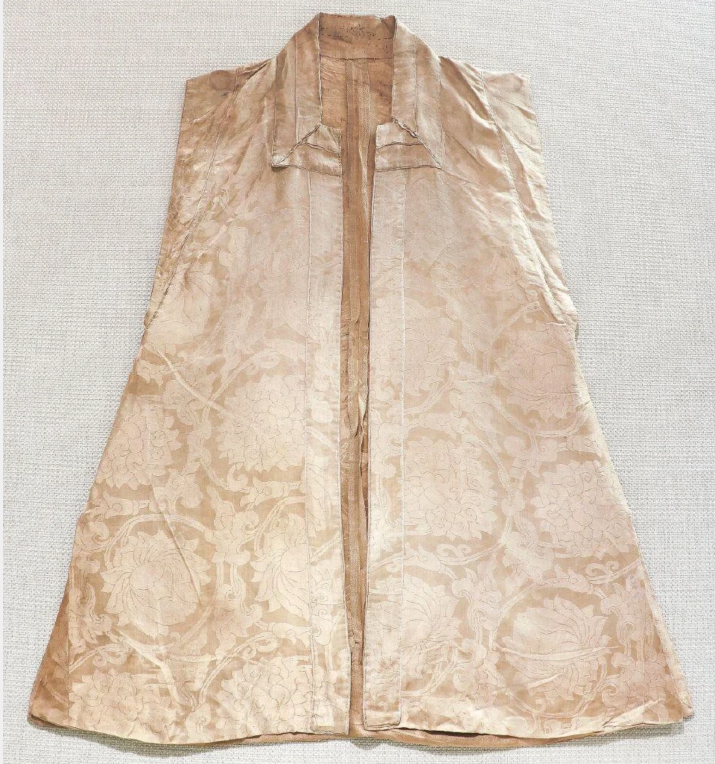
A Bijia is a sleeveless, collarless waistcoat with a slit on both sides and under the knee, and its style is longer than the later waistcoat, generally long to the hip or to the knee, some longer, less than one foot from the ground, also known as “vest and pants”.
It is usually made of silk, brocade and other materials. Bijia is characterized by a slit in the front, narrow sleeves, and a slightly curved tail, usually with skirts, trousers and other wear.
Bijia has a strong position in the traditional chinese culture clothing, of the Han nationality. It is a kind of clothing with traditional chinese culture connotation and embodies the unique charm of the Han nationality clothing.
Jiaoling Ruqun/交领襦裙(Cross-collar ruqun)
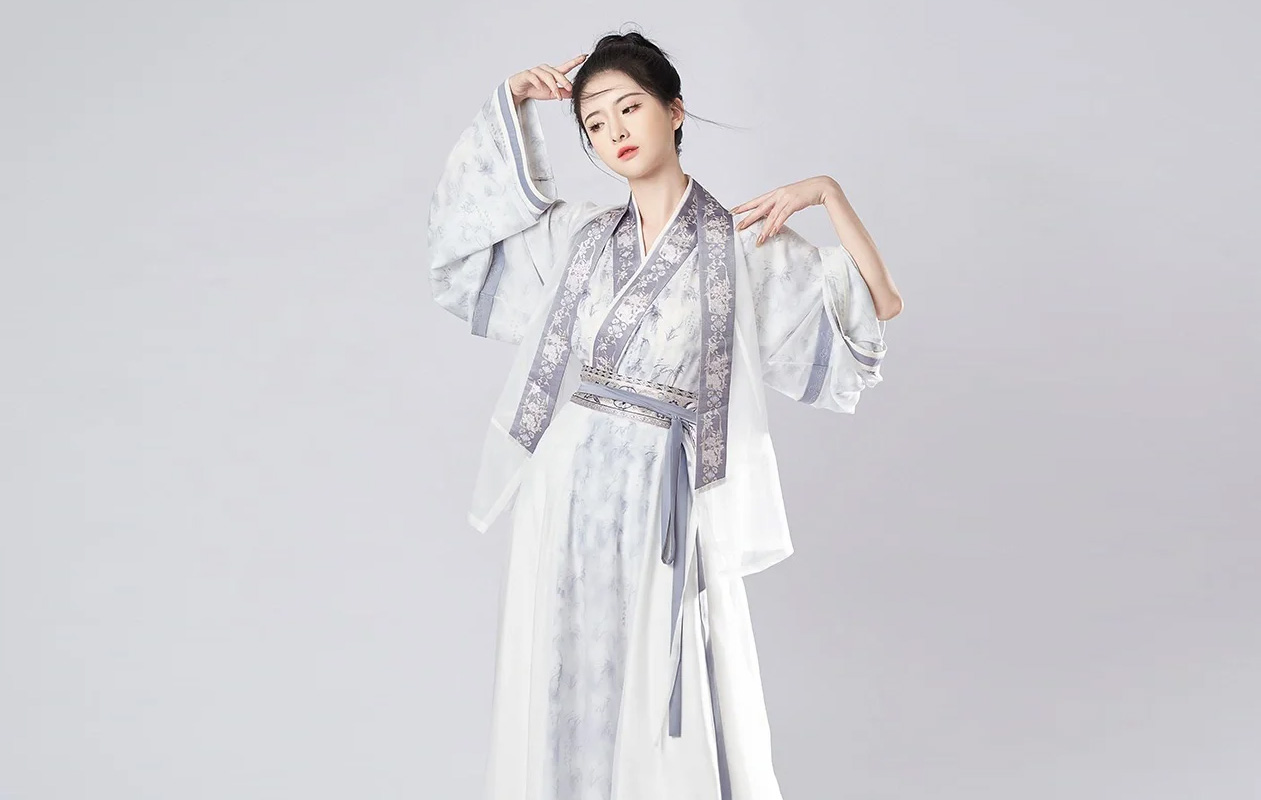
The cross-collar ruqun features the left and right front panels of the garment crossing and overlapping at the chest, forming a distinct “cross-collar” shape. The upper part of the cross-collar ruqun is usually shorter, while the lower skirt part is longer. This style of garment was commonly seen during the Song Dynasty in China.
Qixiong Ruqun/齐胸襦裙 (Chest length skirt)
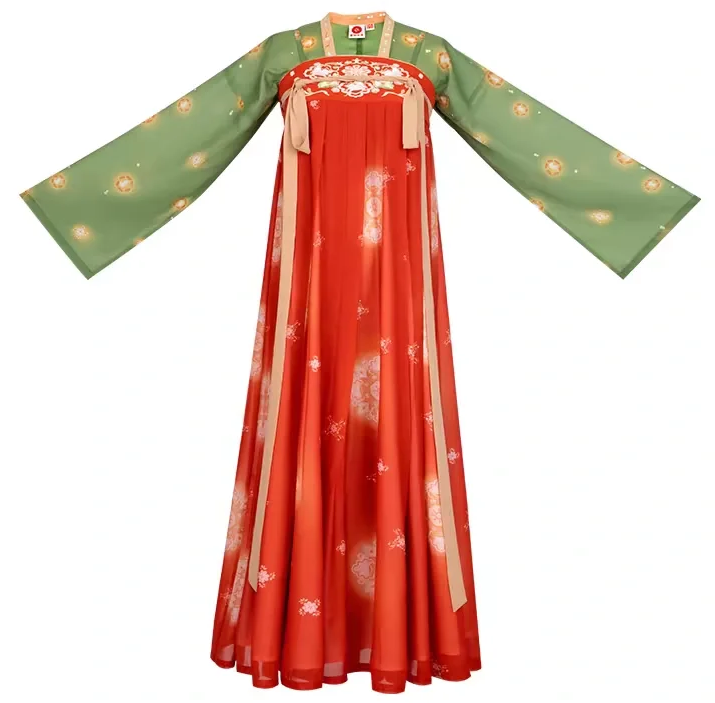
Qixiong ruqun were mainly the most popular types in the Tang Dynasty. Women’s clothing during this period was characterized by loose and comfortable, bright colors and complicated patterns. Although the chest-skirt is beautiful, it is more complicated to wear and needs to be fixed on the chest, which is not convenient for action.
Tops design:The Qixiong Ruqun is generally short, the length is usually to the chest, and sometimes it is designed in the form of the front, that is, the front is open, and can be tied or fixed with buttons. The sleeves of a ruqun can be tight or wide, depending on The Times and personal preference.
Bottoms design:The bottoms is usually a long skirt, can be a piece or more pieces of splicing, the skirt waist is higher, and the jacket meets, forming a chest-length visual effect.
Belt design:As they wear chest-high ruqun, they often wear belts to hold their skirts in place and show off their proportions. Belts can be made of cloth, silk or rope, and sometimes are decorated with elaborate accessories.
Ornament:Chest-length skirt may have embroidery, edging or other decorations on the neckline, cuffs and hem, They adding to the beauty and artistry of the clothing.
Qiyao Ruqun/齐腰襦裙 (Waist Ruqun)
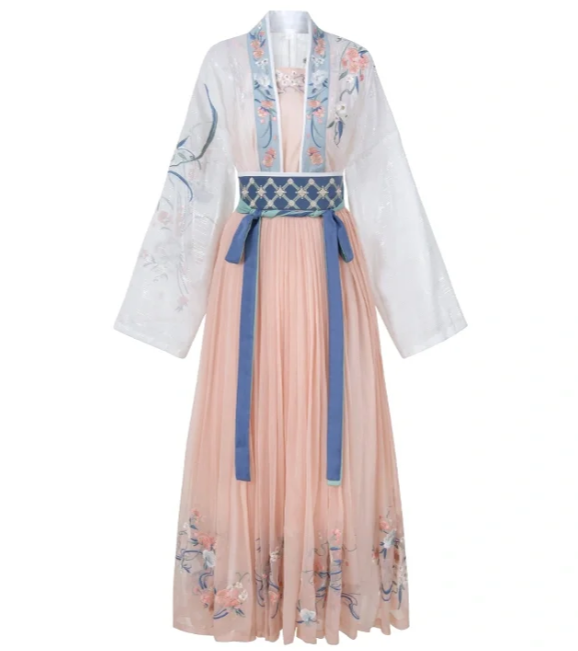
Waist ruqun is originated in the Han Dynasty, also called Waist hanfu, the decoration pattern of Han clothing, the basic feature of Hanfu is to hand over the right skirt, Waist-length skirt are more common than chest-length ruqun.
Qiyao ruqun were mainly popular in the Song Dynasty. Women’s clothing in this period long history was characterized by simplicity, generosity and implication.
Tops design:Ruqun length generally to the waist, it can be a cross-collar or flap-on design, cuffs can be tight or wide mouth, according to the era and personal preferences vary.
Bottoms design:The bottoms is usually a long skirt, which can be a piece or more pieces of splicing. The skirt waist is higher and meets the jacket to form a waist-length visual effect. Skirts come in equally rich fabrics and colors, which can be selected according to the season and occasion.
Belt design:To secure their skirts and accentuate their proportions, they often wear waist ruqun or belts. These accessories can be cloth, ribbon or rope, and sometimes they are decorated with elaborate accessories.
Ornament:The waist skirt may have embroidery, edging or other decorations in the neckline, cuffs and hemline, adding to the beauty and artistry of the costume.
Tanling Ruqun (坦领襦裙)
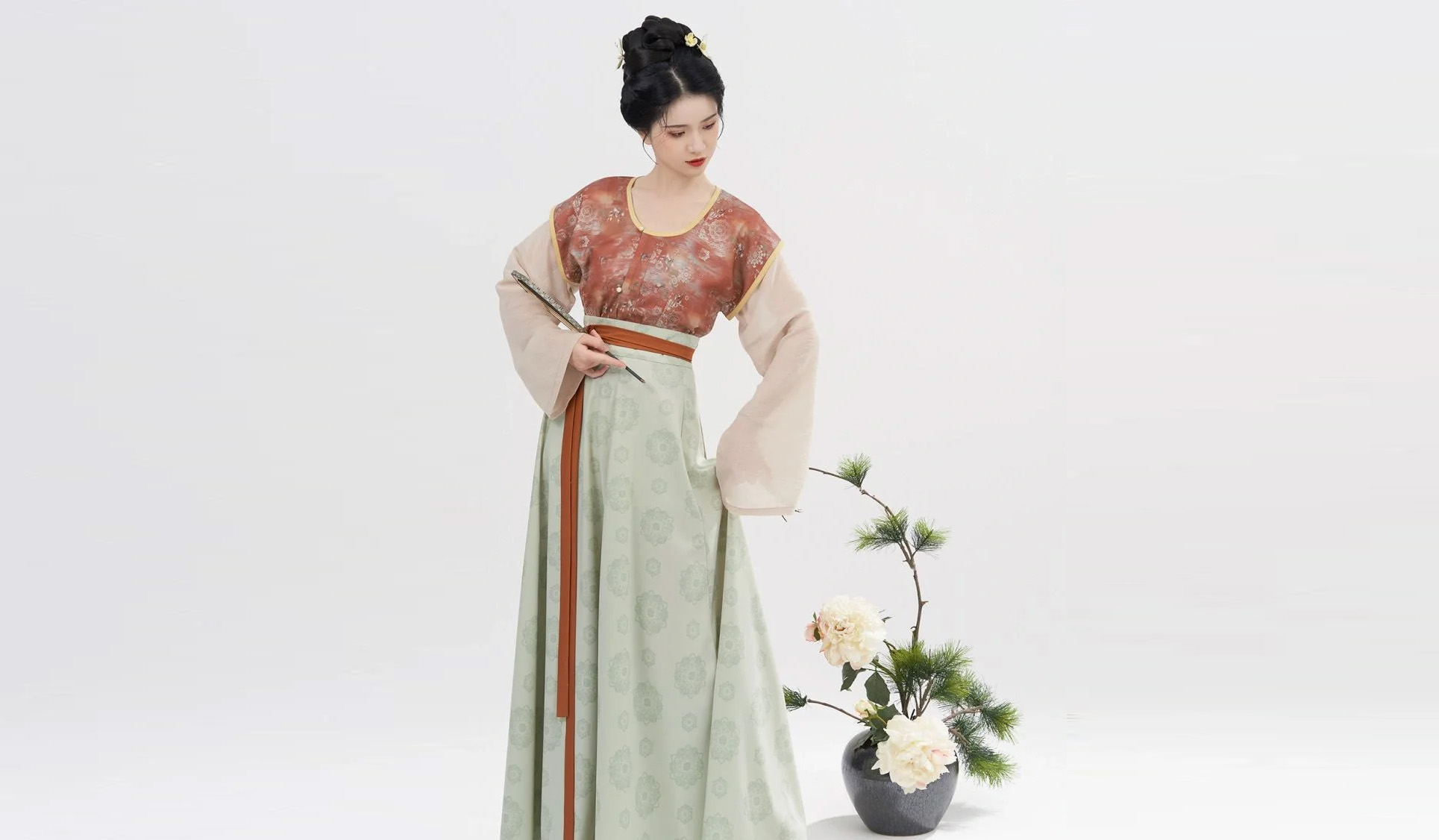
Tanling, also known as U collar, is a kind of half arm of Hanfu, which originated from a kind of short tops in the Wei and Jin dynasties.
Collar design:The tan-collar is the most prominent feature of this dress, with a low collar that can show the wearer’s neck line and part of the chest. This design is relatively bold in ancient clothing, reflecting the open social atmosphere of the Tang Dynasty.
Tops design:Tops generally length to the waist, can be in the form of a collar or on the front, cuffs can be tight mouth or wide mouth, it according to The Times and personal preferences vary.
Bottoms design:The bottoms is usually a long skirt, which can be a piece or more pieces of splicing. The skirt waist is higher and meets the jacket to form a waist-length visual effect. Skirts come in equally rich fabrics and colors, which can be selected according to the season and occasion.
Blet Design:To hold their skirts in place and show off their proportions, tan-collar ruqun often come with belts or waists. These accessories can be cloth, ribbon or rope, and sometimes they are decorated with elaborate accessories.
Yuanling Robe (圆领袍)
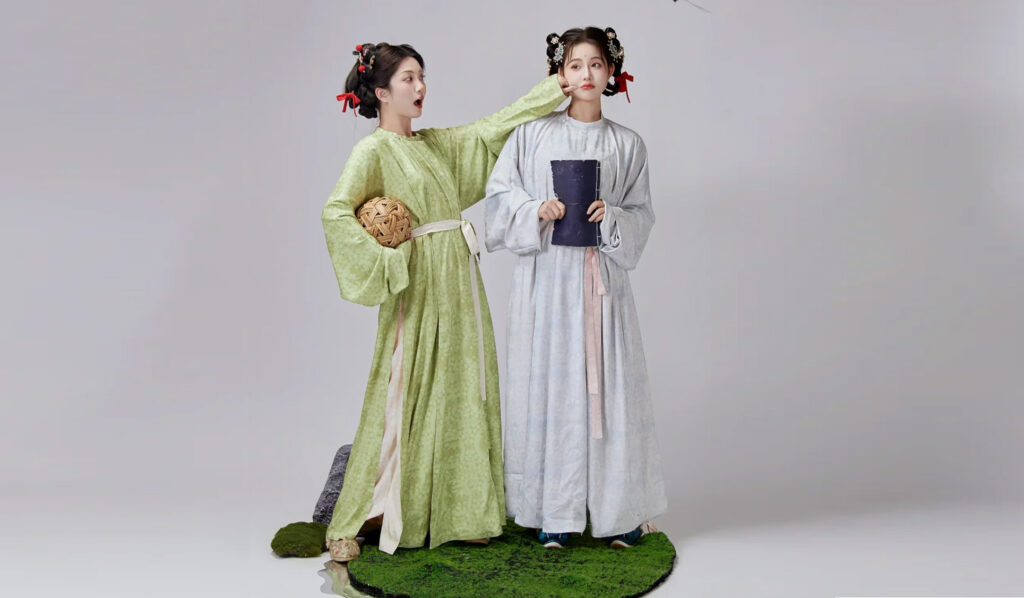
The yuanling robe is also called “robe shirt” , The collar is round, according to the situation, the collar can be opened large and small, and the arc can be circular or elliptical. the robe is a jacket, and the shirt is a single garment, which is later collectively referred to as a robe.
This closing method is different from the “hand over the right side” of the traditional Hanfu, which shields the human body more tightly and enhances the resistance to the wind and sand.
Collar design:The most notable feature of the round collar is its round collar, which is both convenient to wear and has a certain decorative effect.
Tops design:The body of the yuanling robe gown is usually more loose, so as to facilitate activities, but also reflects a solemn and atmospheric style.
Sleeve design: The sleeves of the yuanling robe gown are generally wider, and sometimes the cuffs will have straps or buttons to adjust the tightness of the cuffs.
Blet Design:In order to stabilize the body and accentuate the figure, the yuanling robe gown is usually worn with a belt or waist seal. Belts can be made of cloth, silk or rope, and sometimes are decorated with elaborate accessories.
Taoist Robe (道袍)
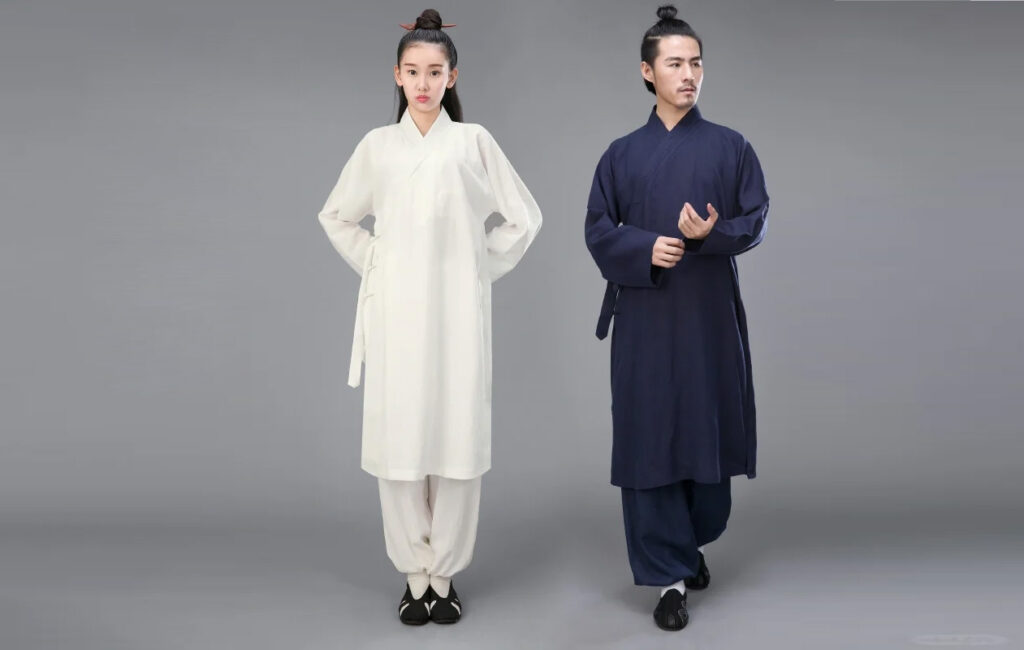
Taoist robes are special clothing worn by Taoist priests during religious activities. It is not only practical, but also contains a rich history, cultural connotation and religious symbolism. The shape of the Taoist robe is usually loose, so that the Taoist priest can move freely during religious ceremonies or other activities.
Collar design:The neckline of taoist robe is designed as a cross-collar, that is, the left and right skirts cross the chest, and the right skirts cover the left side, which reflects the characteristics of Chinese fashion.
Sleeve design: The sleeves of Taoist robes are generally long, and sometimes even reach the ground, in line with the Taoist idea of pursuing detachment from the secular and pure inaction.
Color:The colors of Taoist robes are mostly dark or plain, such as green, blue, gray, black, etc., which symbolize tranquility, calmness and solemnity.
Materials:The material of Taoist robes is mainly made of natural fibers such as cotton and linen to ensure the comfort and breathability of wearing.
Ornament:Taoist robes may have simple patterns or embroideries, such as the Taiji diagram, eight diagrams, moire patterns, etc., which have the symbolic significance of Taoist culture.
